In figure calculate the linear acceleration of the blocks.
Mass of block B=8kg
mass of disc shaped pulley =2kg (take g=10m/s2)
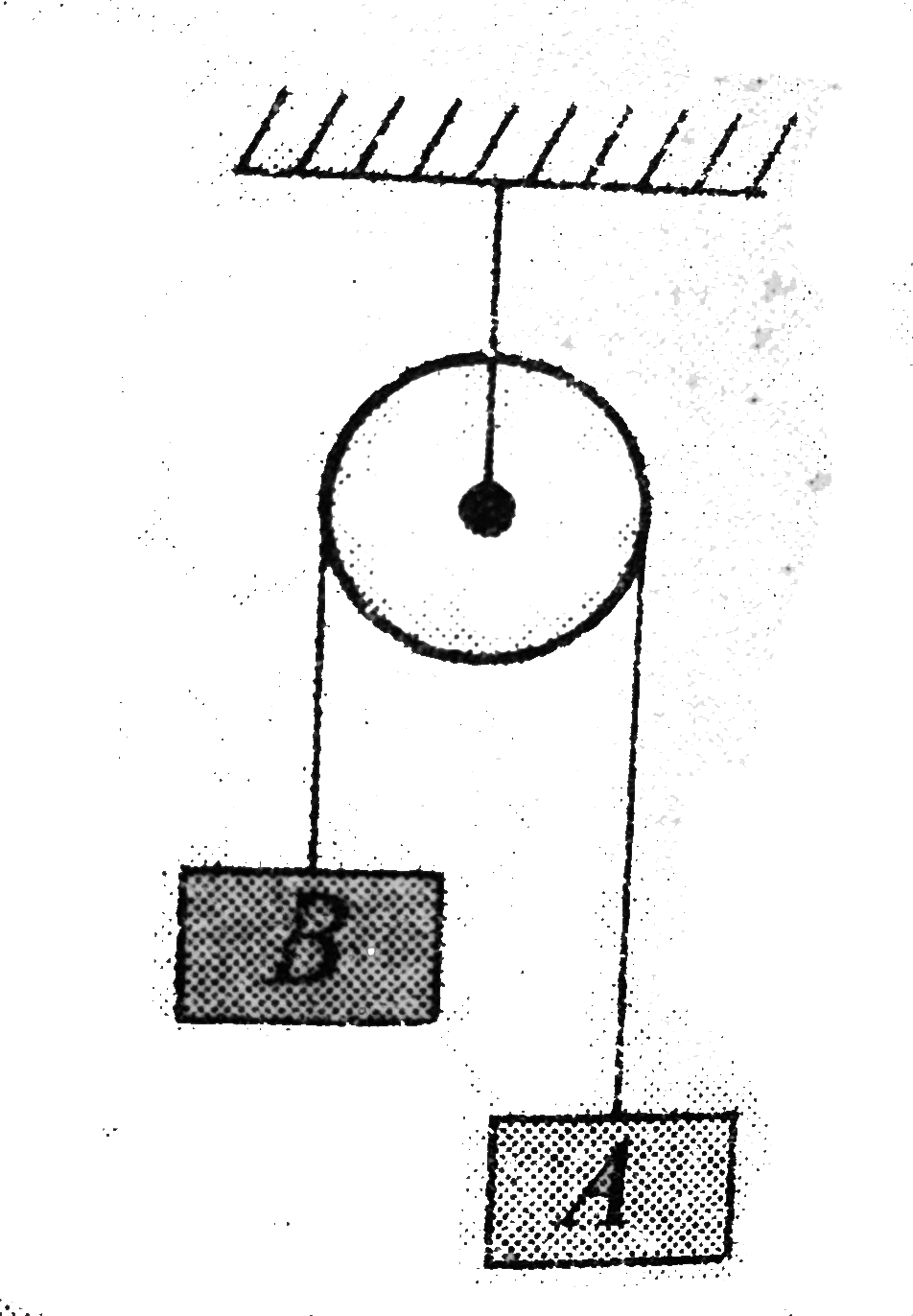
Let R on the radius of the pulley and T1 and T2 be the tension in the left and right portions of the string Unlike laws of motion where tension in striln is the same on both the sides of the pulley. In this case, the string does not slide and the pulley rotates. the tensions on both the sides of the pulley will be different. this This different tensions will provide angular acceleration to pulley.
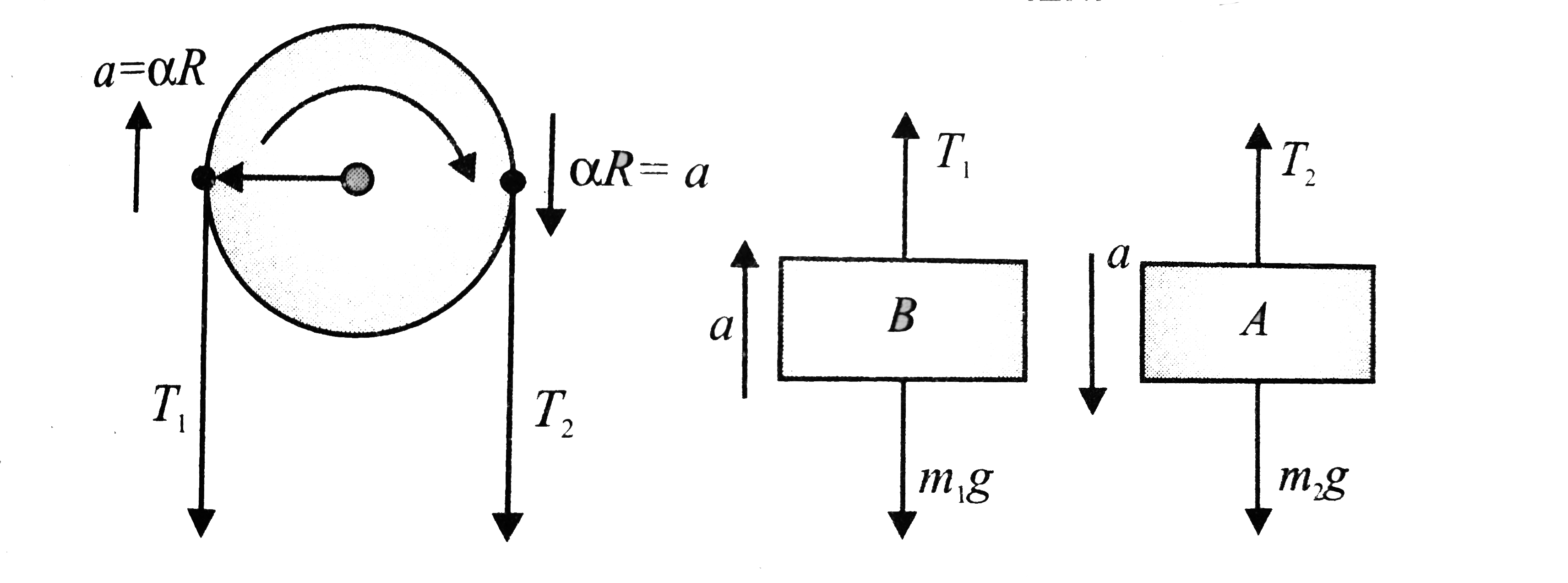
Let m1=8kg,m2=10kg,M=2kg
Let a be the acceleration of blocks.
for the blocks (linear motion)
T1−m1g=m1a.......i
m2g−T2=m2a...........ii
For the pulley (rotation)
Net torque τ≠t=Iα
T1R−T1R=12MR2α
The linear acceleration of the blocks is the same as the tangetial acceleration of any point on the circumference of the pulley which is Rα.
a=Rα
Dividing eqn iii by R and addinng to eqn i and ii we get
m2g−m1g=m2a+m1a+M2Rα⇒m2g−m1g
=(m2=m1+M2)a
a=m2−m1m2+m1+M2g=(10−8)g10+8+22=2019m/s2
Topper's Solved these Questions
- BOOK - CENGAGE PHYSICS ENGLISHCHAPTER - RIGID BODY DYNAMICS 1EXERCISE - Solved Examples9videos
RIGID BODY DYNAMICS 1
- BOOK - CENGAGE PHYSICS ENGLISHCHAPTER - RIGID BODY DYNAMICS 1EXERCISE - Exercise 2.16videos
RIGID BODY DYNAMICS 1
- BOOK - CENGAGE PHYSICS ENGLISHCHAPTER - PROPERTIES OF SOLIDS AND FLUIDSEXERCISE - INTEGER_TYPE2videos
PROPERTIES OF SOLIDS AND FLUIDS
- BOOK - CENGAGE PHYSICS ENGLISHCHAPTER - RIGID BODY DYNAMICS 2EXERCISE - Interger2videos
RIGID BODY DYNAMICS 2
Similar Questions
The acceleration of the 10 kg mass block shown in the figure is : -
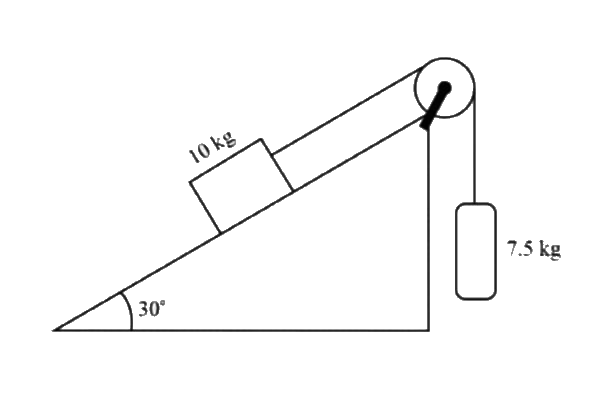 View Solution
View SolutionA block of mass 8 kg is sliding on a surface inclined at an angle of 45∘ with the horizontal. Calculate the acceleration of the block. The coefficient of friction between the block and surface is 0.6. (Take g=10m/s2)
View SolutionA block of mass 8 kg is sliding on a surface inclined at an angle of 45∘ with the horizontal . Calculate the acceleration of the block . The coefficient of friction between the block and surface is 0⋅6 ( Take g = 10m/s2)
View SolutionTwo blocks 'A' and 'B' having masses mA and ma, respectively are connectd by an arrangement shown in the figure. Calculate the downward acceleration of the block B. Assume the pulleys to be massless. Under what condition will block A have downward acceleration?
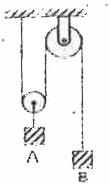 View Solution
View SolutionThe magnitudes of accelerations of blocks of mass 2 kg and 4 kg are respectively . ( Pulleys and threads are massless) ( g = 10 m/s2)
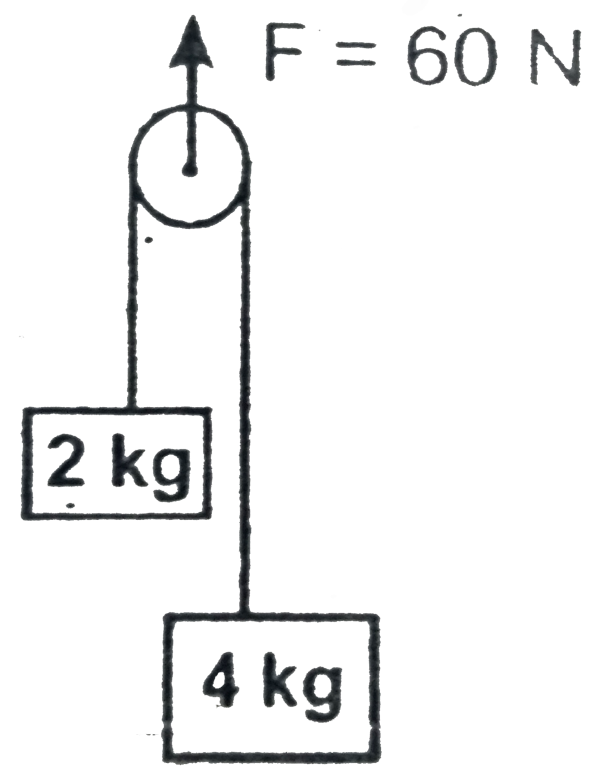 View Solution
View SolutionA block B is pulled by a force of 18 N applied to a light pulley as shown in the figure. If the coefficient of friction is 0.4 and the acceleration of the block is 0.5 ms−2 , the mass of the block is (g=10m/s2)
 View Solution
View SolutionFind the acceleration of the two blocks shown in figure-2.101.Take g=10m/s2
View SolutionA 2 kg block A is attached to one end of a light string that passes over an an ideal pulley and a 1 kg sleeve B slides down the other part of the string with an acceleration of 5m/s2 with respect to the string. Find the acceleration of the block, acceleration of sleeve and tension in the steing. [g=10m/s2]
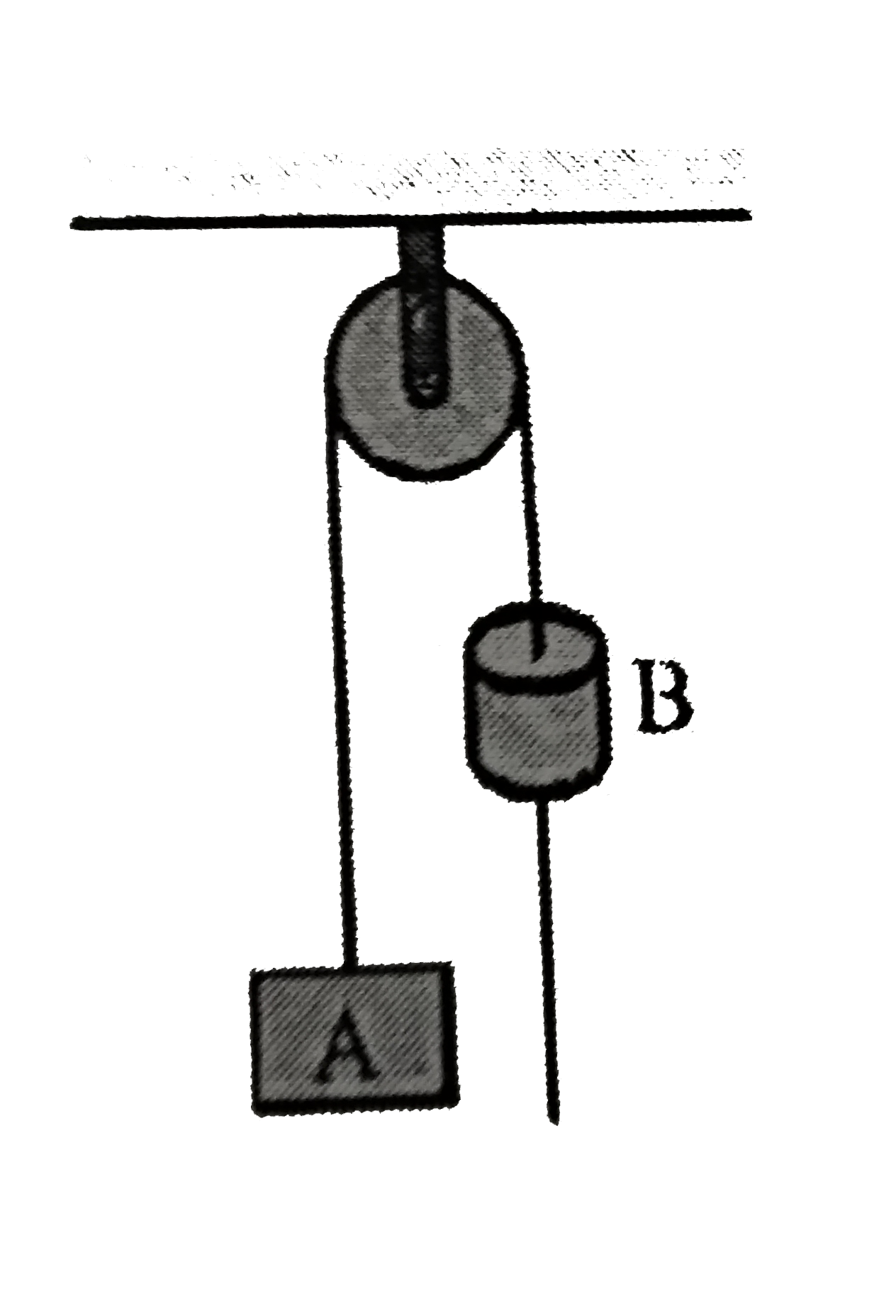 View Solution
View SolutionThe elevator shown in figure is descending with an acceleration of 2ms2. The mass of the block A is 0.5 kg. What force is exerted by the block A on the block B?
 View Solution
View SolutionA wooden block of mass 1kg and density 800Kgm−3 is held stationery, with the help of a string, in a container filled with water of density 1000kgm−3 as shown in the figure. If the container is moved upwards with an acceleration of 2ms−2, then the tension in the string will be ( takeg=10ms−2)
 View Solution
View Solution

